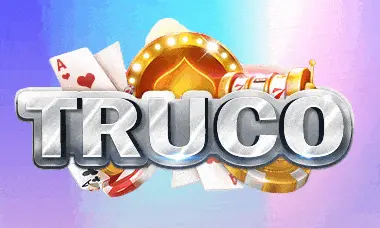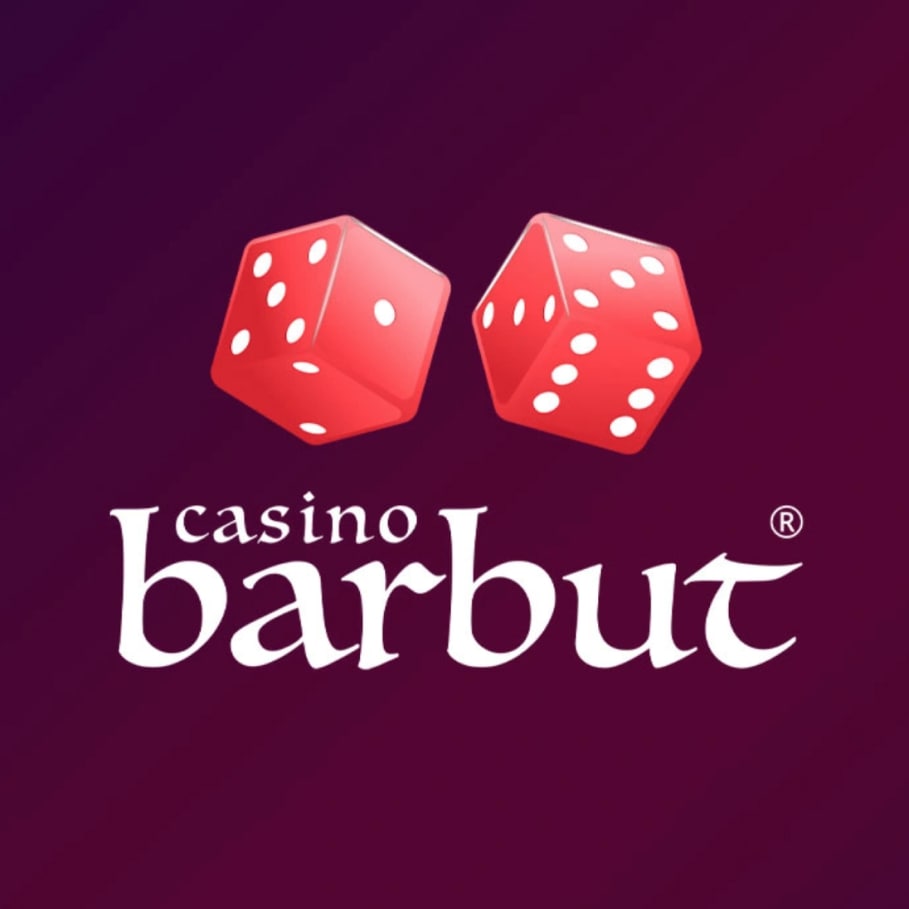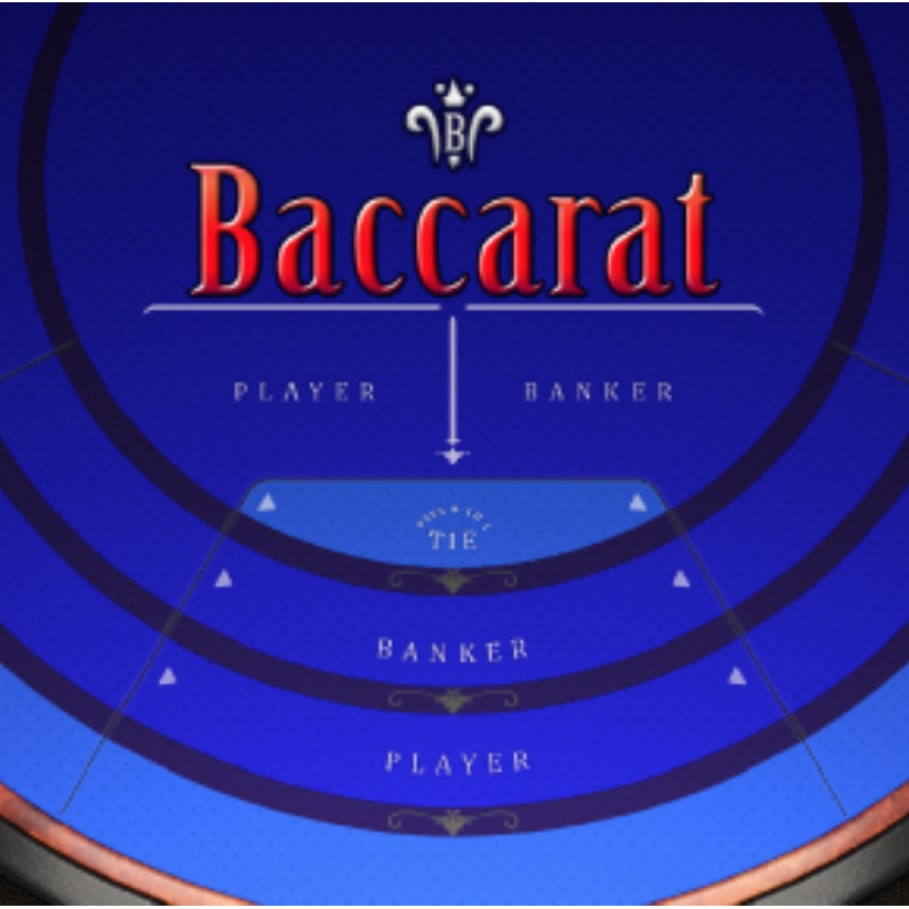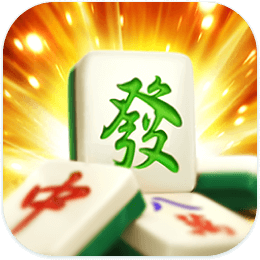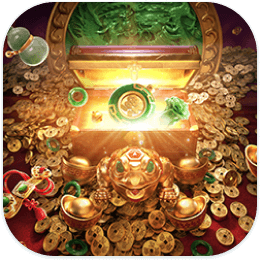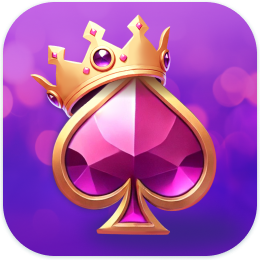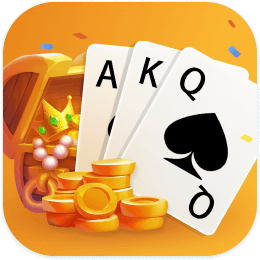The best times to bluff when playing poker - WPT Global
Bluffing is one of the most important elements of poker. Read the article to find our about the best times to bluff.
-
Reglas del póker
-
Reglas del torneo
-
Glosario de póker
-
Juegos de póquer
-
PLO
-
Short Deck
-
Global Spins
-
Recompensa Misteriosa
-
Seguro
-
Revelar Manos
-
Caza del conejo
-
Extensión de Tiempo
-
Apuesta de Carta Oculta
-
Festival de Regalos
-
Jackpots

Bluffing is one of the most important elements of poker. The fact that you can bluff and make someone fold a better hand than you is part of what makes poker a game of skill. If you couldn’t bluff, you may as well turn every hand face-up and see who wins each time.
It is also one of the more glamorous parts of poker. Everyone wants to be the one to make a big bluff in a huge pot, then smugly turn over the cards to rub it in your opponent’s face while scooping in the chips. But why do people bluff, and how exactly does it work? Download WPT Global to your device and we’ll dive into bluffing in this article.
What Is Bluffing?
Bluffing is the act of betting with the intention of getting a better hand to fold. While most bluffing is not done with a made-hand, a player can decide to turn a made-hand, like a pair, into a bluff if they don’t think it can win at showdown. A player can even end up bluffing with the best hand if their opponent also has nothing. The key point is not necessarily getting a better hand to fold, but betting with that intention.
Why Do Poker Players Bluff?
The primary reason that poker players bluff is because if they didn’t, they would have no way of winning when they have the worst hand. Being able to bluff is what makes poker a game of skill, and knowing when to bluff and when not to bluff is what separates the good players and the bad players.
The more theoretical reason players bluff is that if you never bluff and only bet for value, your opponent can always fold when you bet. By bluffing at some frequency, you force your opponent to call your bets, giving value to your made hands.
The aim when you’re bluffing is to balance your frequency of bluffs and value bets to the point where your opponent becomes indifferent between calling and folding. This means that they need to call at the exact right frequencies. Otherwise, your bet becomes automatically profitable. If they fold too often, your bluffs become profitable and if they call too often, your value hands become profitable.
How to Bluff in Poker?
If you’ve read this far and think that you want to start using bluffs in your game, the good news is that it’s really easy to make a bluff! All you need to do is bet when you think you have the worst hand, and there you have it, you’ve bluffed.
The tough part comes when learning how to pick the right times to bluff. You can’t bluff every single hand that you don’t have a pair because if you do you’re going to be bluffing far too often and your opponents can profitably call down with any piece of the board! You need to pick and choose your bluffs carefully and use any information you have to work with to determine where the best bluffing spots are.
Hand reading is a very important skill when it comes to bluffing. You need to be able to fully analyze the hand up to the point you’re going to bluff to try and get an accurate read on your opponent’s range. If you’re in a spot where your opponent shows up with a lot of very strong hands, it probably isn’t a good idea to bluff - even if you have nothing!
Instead, try to bluff when you think your opponent’s range is weaker than average. For example, if they take an extremely passive line throughout the hand, it’s likely they don’t have a monster, as strong hands will often try to build the pot.
You must also take into consideration your own range of hands. If you’re in a situation where you aren’t likely to have many strong hands based on the way you’ve played, it’s less likely your bluff will work. You want to be able to sometimes have the hand you’re representing with your bluff. If you don’t, your opponent will likely sniff it out and call you down.
Some boards will lend themselves more favorably to bluffs than others. Situations where your range is perceived to be much stronger than your opponents are golden bluffing opportunities, as your opponent needs to be wary of all the strong hands you can have. These situations mostly happen on the flop, before ranges have a chance to get too condensed.
For example, in a $1/$2 cash game, you raise the button with 6c5c and get called by your opponent in the big blind. The flop comes AcKdQs, and your opponent checks. Should you bluff?
The answer is yes; you should bluff! You have so many strong hands on this board that your opponent doesn’t have. You have all combos of AA, KK, QQ, AK, AQ, KQ, and JT, whereas your opponent will 3-bet most of these hands, so they will only have a few combos of JT or KQ. On boards where you have a significant range advantage, you can go pretty crazy with your bluffs, knowing that your opponent is going to have a tough time calling down with even the strongest parts of their range.
What are the Different Types of Bluffs?
There are two types of poker bluffs - a semi-bluff and a pure bluff.
A semi-bluff is a bluff that is made when you have a chance to make the best hand. When you bet with a flush or straight draw, you’re making a semi-bluff - you want them to fold, but if they call, you have a chance to make the best hand.
On the other hand, a pure bluff is a bluff that is made when you have little to no chance of making the best hand. These are often made on the river as there are no more cards to come, and therefore no chance your hand will improve; however, they can also be made on earlier streets.
It is always preferable to make a semi-bluff over a pure bluff if it’s possible, even if it’s just a gut-shot straight draw or two over-cards to the board. By making a semi-bluff, you give yourself two chances to win the hand. You can either get your opponent to fold or make the best hand if they call. With a pure bluff, you’re solely relying on your opponent folding to be able to win the hand.
This is not to say that pure bluffs don’t have their place, as they do. The key is to try and pick situations where you think your opponent will be folding enough for the pure bluff to work. Boards that strongly favor your range over your opponent’s range are great candidates for pure bluffs as they have a high probability of working.
How to Spot a Poker Bluff?
But what about if you’re on the other side of the equation and you’re facing a bet, trying to work out whether or not it’s a bluff? How can you tell whether or not your opponent is bluffing? Well, some opponents make it more obvious than others, and the best players are able to make their bluffs and value-bets indistinguishable. However, there are some things you can look out for that might tip you off to the strength of their hand.
Their Line
The first thing you need to think about is “does their line make sense?” This means thinking through the whole hand up until this point to see if the hand or range of hands they’re representing makes sense given the previous action. The less a hand makes sense, the more likely it is that they’re bluffing.
However, when you think through the hand, it’s important to have a strong idea of who you’re playing against. If you’re playing against a complete amateur who has no idea about poker strategy, then their line not making sense isn’t necessarily indicative of a weak hand - they just don’t know how to play. In situations like this and even against competent opponents, you also need to consider their playing style.
The more loose and aggressive they are at the table, the more likely it is that they’re going to be bluffing. These kinds of players are more prone to bluffing than passive players, who tend to wait for strong hands before making bets. If a normally tight and passive player takes a line that doesn’t make sense, they’re more likely to have a strong hand than a weak hand because of their playing style.
Sizing
Some players will make the mistake of sizing their bluffs differently from their value bets. Sometimes this takes the form of sizing their bluffs much bigger than their value bets in an attempt to scare their opponent off the hand, or sizing their bluffs much smaller so they don’t lose as much if they get called.
You’ll need to watch your opponents carefully to see if you can spot sizing tells like this, as they’re different for each player. Paying close attention can also help you pick up other tells on your opponent, whether it’s their body language, how they put their chips in, or how they look at their cards. As a poker player, you need to be dialed in to the game at all times if you want to find these edges. No mindlessly scrolling through your phone; if you want to pick off bluffs, you need to pay attention to your opponents.
What are the Best Poker Bluffing Tips?
We’ve covered a lot so far, and remembering all of this can be quite hard when you’re sitting at the table. To help you out, check out some of our best bluffing tips for you to remember the next time you want to pull off a big bluff.
- Have your story make sense - If the hand you’re representing doesn’t make sense given the range of hands you’re likely to have, your bluff isn’t going to work.
- Size the same as your value bets - When you’re bluffing, you shouldn’t make your bet size different from your value bets in the same spot. Use a uniform sizing for both bluffs and value-bets.
- Choose boards good for your range - The best spots to bluff are when your range hits the flop/turn/river a lot more than your opponent’s range. These spots allow you to apply maximum pressure and get folds more frequently.
- Always semi-bluff where possible - If you have the choice between a semi-bluff or a pure bluff, always go for the semi-bluff. Having that extra equity makes bluffing so much more profitable.
- Don’t bluff into a strong range - If you think your opponent has a lot of strong hands in a certain situation, then it’s a good time to give up. Don’t think you have to bluff just because you have nothing - money saved is money earned, after all.
- Keep a poker face - As well as your bet-sizing, your actions at the table should be the same when you’re bluffing or value-betting. Try to keep tells to a minimum and act the same way, so if you’re talkative when you’re value-betting, you also need to be talkative when you bluff.
Summary
Bluffing is one of the most fun parts of poker. Taking a bad hand and blowing your opponent off a much stronger one by the river is exhilarating and part of what makes this game so fun. However, you need to learn to pick your spots carefully. Look for situations where the board favors your range, and try to semi-bluff wherever possible. If you follow our bluffing tips, you’ll be bluffing like a pro in no time.
Download WPT Global to your device and enjoy all your favorite poker and casino action online. Check out the fun WPT Global tournament just waiting for you to jump in, play and try some bluffs.
Bluffing is the act of betting with the intention of getting a better hand to fold. While most bluffing is not done with a made-hand, a player can decide to turn a made-hand, like a pair, into a bluff if they don’t think it can win at showdown. A player can even end up bluffing with the best hand if their opponent also has nothing. The key point is not necessarily getting a better hand to fold, but betting with that intention.
Why Do Poker Players Bluff?
The primary reason that poker players bluff is because if they didn’t, they would have no way of winning when they have the worst hand. Being able to bluff is what makes poker a game of skill, and knowing when to bluff and when not to bluff is what separates the good players and the bad players.
The more theoretical reason players bluff is that if you never bluff and only bet for value, your opponent can always fold when you bet. By bluffing at some frequency, you force your opponent to call your bets, giving value to your made hands.
The aim when you’re bluffing is to balance your frequency of bluffs and value bets to the point where your opponent becomes indifferent between calling and folding. This means that they need to call at the exact right frequencies. Otherwise, your bet becomes automatically profitable. If they fold too often, your bluffs become profitable and if they call too often, your value hands become profitable.
How to Bluff in Poker?
If you’ve read this far and think that you want to start using bluffs in your game, the good news is that it’s really easy to make a bluff! All you need to do is bet when you think you have the worst hand, and there you have it, you’ve bluffed.
The tough part comes when learning how to pick the right times to bluff. You can’t bluff every single hand that you don’t have a pair because if you do you’re going to be bluffing far too often and your opponents can profitably call down with any piece of the board! You need to pick and choose your bluffs carefully and use any information you have to work with to determine where the best bluffing spots are.
Hand reading is a very important skill when it comes to bluffing. You need to be able to fully analyze the hand up to the point you’re going to bluff to try and get an accurate read on your opponent’s range. If you’re in a spot where your opponent shows up with a lot of very strong hands, it probably isn’t a good idea to bluff - even if you have nothing!
Instead, try to bluff when you think your opponent’s range is weaker than average. For example, if they take an extremely passive line throughout the hand, it’s likely they don’t have a monster, as strong hands will often try to build the pot.
You must also take into consideration your own range of hands. If you’re in a situation where you aren’t likely to have many strong hands based on the way you’ve played, it’s less likely your bluff will work. You want to be able to sometimes have the hand you’re representing with your bluff. If you don’t, your opponent will likely sniff it out and call you down.
Some boards will lend themselves more favorably to bluffs than others. Situations where your range is perceived to be much stronger than your opponents are golden bluffing opportunities, as your opponent needs to be wary of all the strong hands you can have. These situations mostly happen on the flop, before ranges have a chance to get too condensed.
For example, in a $1/$2 cash game, you raise the button with 6c5c and get called by your opponent in the big blind. The flop comes AcKdQs, and your opponent checks. Should you bluff?
The answer is yes; you should bluff! You have so many strong hands on this board that your opponent doesn’t have. You have all combos of AA, KK, QQ, AK, AQ, KQ, and JT, whereas your opponent will 3-bet most of these hands, so they will only have a few combos of JT or KQ. On boards where you have a significant range advantage, you can go pretty crazy with your bluffs, knowing that your opponent is going to have a tough time calling down with even the strongest parts of their range.
What are the Different Types of Bluffs?
There are two types of poker bluffs - a semi-bluff and a pure bluff.
A semi-bluff is a bluff that is made when you have a chance to make the best hand. When you bet with a flush or straight draw, you’re making a semi-bluff - you want them to fold, but if they call, you have a chance to make the best hand.
On the other hand, a pure bluff is a bluff that is made when you have little to no chance of making the best hand. These are often made on the river as there are no more cards to come, and therefore no chance your hand will improve; however, they can also be made on earlier streets.
It is always preferable to make a semi-bluff over a pure bluff if it’s possible, even if it’s just a gut-shot straight draw or two over-cards to the board. By making a semi-bluff, you give yourself two chances to win the hand. You can either get your opponent to fold or make the best hand if they call. With a pure bluff, you’re solely relying on your opponent folding to be able to win the hand.
This is not to say that pure bluffs don’t have their place, as they do. The key is to try and pick situations where you think your opponent will be folding enough for the pure bluff to work. Boards that strongly favor your range over your opponent’s range are great candidates for pure bluffs as they have a high probability of working.
How to Spot a Poker Bluff?
But what about if you’re on the other side of the equation and you’re facing a bet, trying to work out whether or not it’s a bluff? How can you tell whether or not your opponent is bluffing? Well, some opponents make it more obvious than others, and the best players are able to make their bluffs and value-bets indistinguishable. However, there are some things you can look out for that might tip you off to the strength of their hand.
Their Line
The first thing you need to think about is “does their line make sense?” This means thinking through the whole hand up until this point to see if the hand or range of hands they’re representing makes sense given the previous action. The less a hand makes sense, the more likely it is that they’re bluffing.
However, when you think through the hand, it’s important to have a strong idea of who you’re playing against. If you’re playing against a complete amateur who has no idea about poker strategy, then their line not making sense isn’t necessarily indicative of a weak hand - they just don’t know how to play. In situations like this and even against competent opponents, you also need to consider their playing style.
The more loose and aggressive they are at the table, the more likely it is that they’re going to be bluffing. These kinds of players are more prone to bluffing than passive players, who tend to wait for strong hands before making bets. If a normally tight and passive player takes a line that doesn’t make sense, they’re more likely to have a strong hand than a weak hand because of their playing style.
Sizing
Some players will make the mistake of sizing their bluffs differently from their value bets. Sometimes this takes the form of sizing their bluffs much bigger than their value bets in an attempt to scare their opponent off the hand, or sizing their bluffs much smaller so they don’t lose as much if they get called.
You’ll need to watch your opponents carefully to see if you can spot sizing tells like this, as they’re different for each player. Paying close attention can also help you pick up other tells on your opponent, whether it’s their body language, how they put their chips in, or how they look at their cards. As a poker player, you need to be dialed in to the game at all times if you want to find these edges. No mindlessly scrolling through your phone; if you want to pick off bluffs, you need to pay attention to your opponents.
What are the Best Poker Bluffing Tips?
We’ve covered a lot so far, and remembering all of this can be quite hard when you’re sitting at the table. To help you out, check out some of our best bluffing tips for you to remember the next time you want to pull off a big bluff.
- Have your story make sense - If the hand you’re representing doesn’t make sense given the range of hands you’re likely to have, your bluff isn’t going to work.
- Size the same as your value bets - When you’re bluffing, you shouldn’t make your bet size different from your value bets in the same spot. Use a uniform sizing for both bluffs and value-bets.
- Choose boards good for your range - The best spots to bluff are when your range hits the flop/turn/river a lot more than your opponent’s range. These spots allow you to apply maximum pressure and get folds more frequently.
- Always semi-bluff where possible - If you have the choice between a semi-bluff or a pure bluff, always go for the semi-bluff. Having that extra equity makes bluffing so much more profitable.
- Don’t bluff into a strong range - If you think your opponent has a lot of strong hands in a certain situation, then it’s a good time to give up. Don’t think you have to bluff just because you have nothing - money saved is money earned, after all.
- Keep a poker face - As well as your bet-sizing, your actions at the table should be the same when you’re bluffing or value-betting. Try to keep tells to a minimum and act the same way, so if you’re talkative when you’re value-betting, you also need to be talkative when you bluff.
Summary
Bluffing is one of the most fun parts of poker. Taking a bad hand and blowing your opponent off a much stronger one by the river is exhilarating and part of what makes this game so fun. However, you need to learn to pick your spots carefully. Look for situations where the board favors your range, and try to semi-bluff wherever possible. If you follow our bluffing tips, you’ll be bluffing like a pro in no time.
Download WPT Global to your device and enjoy all your favorite poker and casino action online. Check out the fun WPT Global tournament just waiting for you to jump in, play and try some bluffs.
Obtenga su bonificación por primer depósito del 100%, de hasta $1,500, en el hogar en linea del World Poker Tour
FAQ
Apakah WPT Global memiliki aplikasi seluler?
WPT Global tersedia untuk dimainkan di komputer Anda dalam versi Windows dan Mac, serta di perangkat seluler Anda, baik Android maupun iOS . Langkah-langkah untuk mulai menikmati pengalaman Anda di WPT Global sederhana dan intuitif.
Apakah WPT Global memiliki permainan uang tunai?
WPT Global is available to play on your computer in both Windows and Mac versions, as well as on your mobile device, whether it’s Android or iOS. The steps to start enjoying your experience on WPT Global are simple and intuitive.
Bagaimana cara menginstal WPT Global?
Unduh Perangkat Lunak WPT Global Anda Ikuti tautan PokerNews untuk mengunduh perangkat lunak WPT Global Anda, baik di komputer Windows atau Mac atau di perangkat seluler Android atau iOS Anda . Instal Aplikasi di Perangkat Anda Setelah perangkat lunak diunduh, lanjutkan penginstalan dengan menjalankan berkas penginstal.
Di mana Anda bisa bermain WPT Global?
Download Your WPT Global Software Follow the PokerNews link to download your WPT Global software, either on a Windows or Mac computer or on your Android or iOS mobile device. Install the Application on Your Device Once the software is downloaded, proceed with the installation by running the installer file.
Can I use a VPN for WPT Global?
Can you play WPT Global with a VPN? No, WPT Global does not allow the use of a VPN. However, a VPN that offers residential VPNs may be able to give you access.30 Oct 2024
WPT Global: Póker en línea con dinero real y seguridad garantizada
WPT Global es una plataforma legítima de póker en línea donde se juega exclusivamente con dinero real. No ofrece mesas con dinero de juego (play money), por lo que todas las partidas y torneos que se juegan en WPT Global implican apuestas y premios en dinero real. La plataforma opera bajo licencia de Curazao, gestionada por Seventip N.V., y está certificada por Gaming Laboratories International (GLI), lo que garantiza su seguridad y confiabilidad.
¿Cómo afectó la introducción de los casinos en línea al juego de la ruleta?
¿Cómo afectó la introducción de los casinos en línea al juego de la ruleta? La introducción de los casinos online ha tenido un impacto significativo en el juego de la ruleta. Los casinos en línea hicieron que la ruleta y otros juegos de casino fueran fácilmente accesibles para cualquier persona con conexión a Internet. Los jugadores ahora pueden disfrutar de sus juegos de casino favoritos desde la comodidad de sus hogares, sin tener que viajar a un casino físico.
¿Dónde puedo descargar WPT Global?
However, there are some important exceptions. WPT Global is not available in the United States, the United Kingdom, or in Southern European markets that have their own ring-fenced poker licensing systems—such as France, Spain, Italy, and Portugal.Aug 1, 2025
¿Qué es una persecución de rastrillo?
¿Qué es una persecución de rastrillo? Las cacerías de rake son promociones de poker que son incentivos para que los jugadores obtengan más rake y los recompensan generosamente por ello. A diferencia de una carrera de rake, no compites contra otros jugadores, sino que persigues tus propios objetivos individuales. Para alcanzar los objetivos de puntos, debes jugar una cierta cantidad de manos de póquer o torneos con dinero real. Tan pronto como alcance el requisito de puntos, se habrá asegurado la cantidad de dinero preestablecida para el nivel respectivo.
WPT Global - ¡La plataforma de póker en línea más famosa del mundo! Este es el paraíso para los amantes del póker. Haz clic aquí para descubrir cómo descargar WPT Global.
Este sitio solo recopila artículos relacionados. Para ver el original, copia y abre el siguiente enlace:The best times to bluff when playing poker - WPT Global

